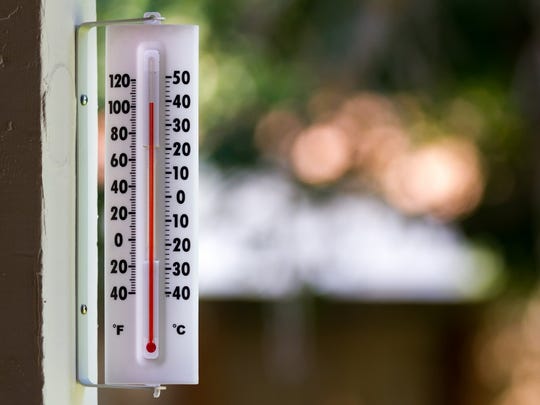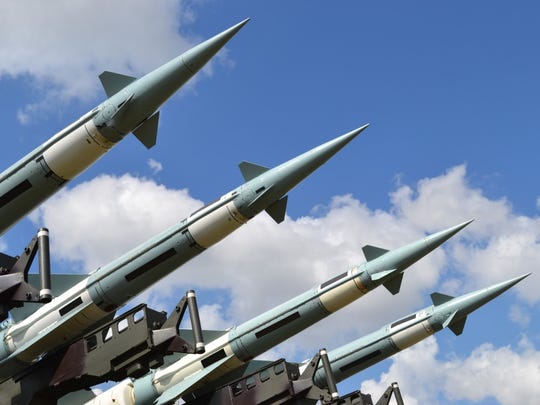In September, the latest report by the Intergovernmental Panel on Climate Change was released, highlighting the importance of lowering global climate emissions, as well as keeping global temperature to below 1.5 degrees Centrigade above preindustrial levels. Average temperatures have already risen by about 1 degree.
The report notes that even if the global community immediately and drastically reduces greenhouse gas emissions, the locked-in, long-term effects of climate change will be dire. The IPCC predicts that “extreme sea level events,” which once occurred every 100 years, will become annual events by 2050.
Depending on whether global temperatures increase by 1.5 or 2 degrees, the difference in outcomes could be extreme, according to the IPCC. The half-degree difference could result in more ice loss, sea level rise, species extinction and severe changes in weather.
Climate scientists agree that global carbon emissions largely affect climate change. They project different scenarios, depending on the amount and rate at which emissions will fall, remain the same or increase.
The “business-as-usual” scenario, referred to as RCP8.5, considers no change in the world's greenhouse gases emissions. Under this scenario, some climate scientists estimate that temperatures would rise by over 4 degrees over preindustrial levels by the end of the century. Some anticipate even higher temperature increases. The consequences of such an increase would probably be disastrous to humanity.
24/7 Wall St. consulted reports by groups such as the IPCC, NASA, the National Oceanographic and Atmospheric Association, the U.S. Global Change Research Program and more to identify the potential effects of global climate change on the Earth and its inhabitants. Many of these predictions are based on average global temperature increases of at least 4 degrees Centigrade above preindustrial levels by 2100. Even if we manage to avoid the worst-case scenarios, many serious consequences of climate change are already being seen and felt around the world.
US cities with the lowest poverty rates: California home to the most

Scientists fear a rise in the global temperature. (Photo: txking / Getty Images)
1. Rising temperatures
Global average temperatures could rise by as much as 7 degrees Centigrade, or 12.6 degrees Fahrenheit, by 2100. The average has risen by about 1 degree Centigrade.
2. Even higher regional temperature increases
Regional temperatures could increase much more than the global average in North Africa, the Mediterranean and the Middle East. Summer temperatures could increase by 9 degrees Centigrade, or about 16 degrees Fahrenheit, in some places.
3. Rising heat in the USA
Average temperatures could rise by as much as 12 degrees Fahrenheit by the end of the 21st century.
4. A rise in hurricane and storm activity
Though the jury is still out on whether global warming has significantly contributed to an increase in the frequency and strength of hurricanes affecting the USA, scientists project global warming is likely to cause a substantial increase in the severity of these events.
5. Drastic changes in weather patterns
Strong El Niño events and erratic monsoon seasons will severely affect access to water and increase water insecurity in Asia and other parts of the Pacific.
6. Reduced regional precipitation
Some scientists predict as much as a 10% decline in precipitation in the subtropics for each degree of global warming.
7. Arctic-free summers
If the Earth warms by 2 degrees Centigrade above preindustrial levels, scientists predict that one out of 10 summers in the Arctic will be ice-free.
8. Greenland ice could disappear
Temperature increases could cause the massive ice sheet to completely melt within a few hundred years.
9. Sea level rise
Warming of 4 degrees Centigrade would lead to a sea level rise of 22.6 to 35.4 feet.

Scientists worry that sea levels will rise. (Photo: AlbertoLoyo / Getty Images)
10. Long-term major sea level rise
Sea levels could rise by as much as 50 feet, meaning less livable land area for humans.
11. Global inundation
The eventual melting of both polar ice caps, which scientists predict is inevitable at the current rate of warming, would result in a sea level rise of more than 120 feet. The loss of the Greenland ice sheet would cause an even greater rise.
12. Flooding of coastal communities
About 145 million people live at altitudes within 3 feet of sea level. These people could be displaced by the end of the century, including in the Netherlands, the USA, South Asia and China.
13. Florida under water
More than 1 million Florida homes are at risk of flooding by 2100, and many major coastal cities could be at least partially under water.
14. Bangladesh flooded
A 3-foot sea level rise would flood 20% of the landmass of Bangladesh, displacing about 30 million people.
15. Widespread drought
By one estimate, available drinkable surface water per person will have fallen from 6,880 cubic yards in 1951 to 1,046 cubic yards by 2025.
16. Severe water scarcity
Several billion people will experience water scarcity by the end of the century. According to one estimate, there could be a 40% gap between global water demand and reliable water supply by 2030.
17. Severe drought in India and Pakistan
India's national water supply is forecast to drop to half of demand as soon as 2030, and Pakistan will face severe water scarcity by 2025.
18. Increase in vector-borne diseases
Changes in temperature, precipitation rates, and humidity are expected to increase the incidence of diseases such as malaria and dengue fever.
19. Extreme political instability
Changes in available food and water resources, mass migrations and other issues could result in widespread instability in regional governments as well as severe armed conflicts.

Scientists quail at the thought of nuclear war. (Photo: 3D_generator / Getty Images)
20. Nuclear war
Resource shortages and displaced populations, which are escalated by the climate emergency, are triggers of conflict. Scientists have not ruled out such worse-case scenarios as the possibility of nuclear war.
21. Widespread forced migration
Rising seas and regional conflicts could lead to large migrations, resulting in homelessness and deteriorating health among the refugees, and to resources stretched thin in nations supporting them.
22. Starvation and food riots
Scientists predict widespread regional declines in crop yields, particularly in fertile river deltas such as the Nile, primarily because of rising sea levels. The result will be widespread food scarcity, which could contribute to regional instability.
23. Major increase in wildfires
Wildfires in the USA have rapidly increased in frequency and severity in recent years. Worsening drought conditions could make fires worse in the coming years.
24. Mass extinction
One in every six species on Earth could become extinct.
25. Coral reefs vanish
If average temperature warming to 2 degrees Centigrade above preindustrial levels, scientists predict that more than 90% of the world's coral reefs, and the delicate ecosystems they support, would be lost.
26. Mass human depopulation
All of these conditions, in combination, could result in widespread human death. Kevin Anderson, director at the Tyndall Centre for Climate Change Research, predicts that half a billion humans would survive increases in average temperature of 5 or 6 degrees.